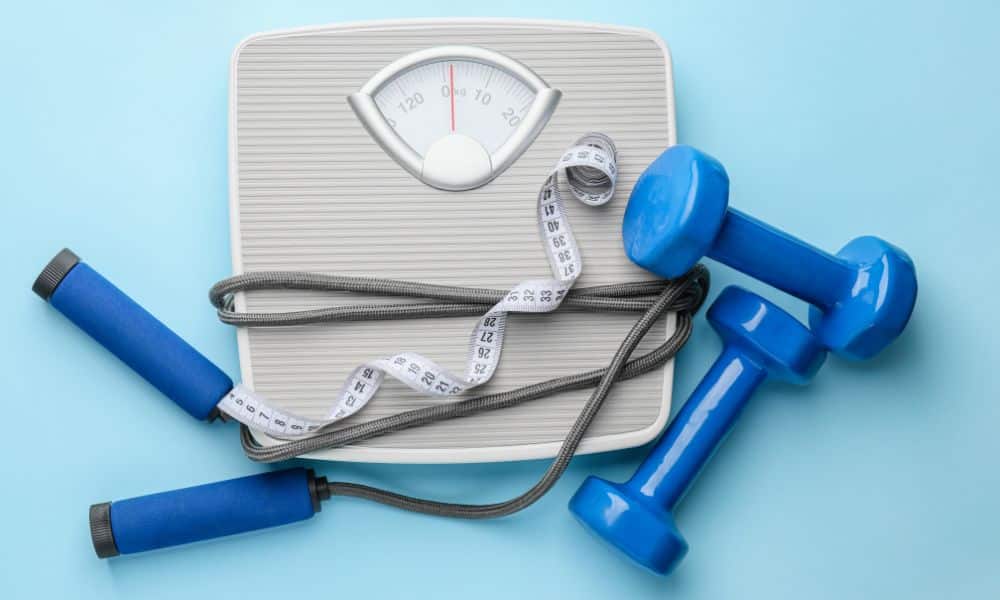Do you want to know about the top 10 fitness myths that could be holding you back? You have come to the right place! There are many fitness myths out there that can hold people back from reaching their health and fitness goals. These myths can be confusing and misleading, and they can make it challenging to know what the truth is.
In this article, we will debunk the top 10 fitness myths. We will explain why these myths are untrue and provide the factual information you need to reach your goals.
Why fitness myths are harmful
Fitness myths can be harmful because they can lead people to make bad decisions about their health and fitness. For example, if someone believes the myth that they can spot reduce fat, they may focus on doing a lot of crunches and sit-ups, even though these exercises will not help them lose belly fat. The time spent performing fruitless exercises could be used to do practical exercises such as squats, lunges, deadlifts, swimming, and running.
In addition, fitness myths can be discouraging. If someone believes a myth that makes it seem like reaching their fitness goals is impossible, they may give up before they even start.
The truth about fitness myths
The truth is, there are no shortcuts to fitness. If you want to reach your goals, you need to put in the hard work and make healthy lifestyle changes. But the good news is it is possible to achieve your goals, even if you believe some fitness myths.
This article will debunk the top 10 fitness myths and give you the information you need to reach your goals. So, whether you are just starting your fitness journey or have been working out for years, read on to learn the truth about fitness myths.
The Top 10 Fitness Myths That Are Holding You Back
Many commonly believed fitness myths can keep you from reaching your health and fitness goals. These myths can lead to people making poor choices about their diet, exercise, and overall lifestyle. As a result, they may not see the results they want or experience negative health consequences.
We will explain why these myths are false and how they can harm your health and fitness goals. By understanding these myths, you can make better choices about your health and fitness and reach your goals more quickly.
Here are the top 10 fitness myths and how they can keep people from reaching their goals:
1. You need to sweat to have a good workout.
This is a common myth, but it’s not true. You can have a great workout without breaking a sweat. Some exercises, such as yoga and Pilates, are designed to be done without sweating.
Sweating is a sign that your body is working hard, but it’s not the only sign. You can also gauge the effectiveness of your workout by how your heart rate is elevated and how your muscles feel after the training.
The goal of a workout is to supplement natural activities and, like food, provide you with the energy to move more during the day. After your workout, you should feel like you can do another exercise.
2. You can spot and reduce fat.
This is another common myth. You can’t target specific areas of your body to lose fat. When you lose weight, you lose it all over your body. You can’t spot reduce fat by doing ab exercises to get a six-pack or doing leg exercises to lose weight in your legs.
But you will be pleased to know why you can’t target fat you can target muscle which will cause you to look more fit and firm at your current body weight.
3. You can get bulky if you lift weights as a woman.
This myth has existed for a long time but is not valid. Women don’t have the same testosterone levels as men, so they won’t get bulky from lifting weights. Lifting weights can help women build muscle and strength, which can help them burn more calories and lose weight.
Not only is it difficult for women to build muscle by lifting weights, but it is also hard for men to get bulky. Many skinny guys are on the internet searching for a way to bulk up as we speak. Also, men with the genes and hormones to bulk up must use workouts intended for bulking and the proper diet. Building muscle is more complex than losing fat. While the body can store any of the three macronutrients, body fat, and only protein can build muscle.
4. Eating fat makes you fat.
This is a myth that’s been debunked by science. Not all fats are created equal. Some fats, such as the healthy fats found in avocados, nuts, and seeds, are good for you. These fats can help you feel full, boost your metabolism, and protect your heart health.
Eating too many calories will make you fat. It doesn’t matter where they come from. The body can even use protein as a source of energy. The body has metabolic flexibility to convert anything you eat into fat. Too much of anything, even a good thing, is bad for you.
5. You need to do cardio to lose weight.
Cardio is a great way to burn calories, but it’s not the only way to lose weight. Strength training can also help you lose weight, and it can also help you build muscle and strength. Cardio and strength training is the best way to lose weight and improve your overall fitness.
To lose weight, you must be in a calorie deficit, which means the calories in or less than the calories out over the week. Exercise is just one part of the equation. Your diet is the most significant part of the equation. You can’t outwork a bad diet.
6. You can’t build muscle without eating a lot of protein.
This is a partially true myth. Protein is essential for building muscle, but you don’t need to eat much protein to build muscle. The amount of protein you need depends on your individual needs. However, ensuring enough protein in your diet is essential, especially if you’re trying to build muscle.
Another factor in building muscle is exercise. Your body has metabolic flexibility, which means it has options for using energy. You have to give it a reason to want to build muscle instead of hormones, cells, and other tissue with protein. While protein may be the fuel, exercise is the fire that ignites the muscle-building process.
7. You need to do ab exercises to get a six-pack.
This is another myth that’s not true. You can’t spot reduce fat in your stomach by doing ab exercises. To get a six-pack, you need to lose overall body fat. You can do ab exercises to help tone your abdominal muscles, but you won’t see a six-pack until you’ve lost enough body fat. A diet can be just as effective at helping you melt the fat away.
8. You can’t get fit if you don’t have much time.
This is a myth that’s holding a lot of people back from getting fit. You don’t need to spend hours at the gym daily to get fit. Even a few minutes of exercise a day can make a difference. There are also many ways to get fit without going to the gym. You can do bodyweight exercises at home, take a fitness class, or go for a walk or run.
Most experts recommend about 30 minutes of exercise a day when performed correctly. Instead of focusing on volume when performing your workout, focus on form, which means you will perform less volume and get results faster. When you achieve 20 perfect pushups, that is better than 50 incorrectly performed pushups.
9. You can’t get fit if you’re not young.
This is another myth that’s holding people back. You can get fit at any age. It’s even more important to be healthy as you get older. Exercise can help you maintain your health and independence as you age.
10. You need to buy expensive supplements to get fit.
This is the last myth we’ll debunk. You don’t need to buy expensive supplements to get fit. Most supplements are unnecessary. You can get all the nutrients you need from a healthy diet. By eating a well-balanced meal, you will get your nutrients.
Conclusion on the Top 10 Fitness Myths That Are Holding You Back
These myths can be harmful because they can lead people to make poor diet, exercise, and overall lifestyle choices. As a result, they may not see the results they want or experience negative health consequences.
By understanding these myths, you can make better choices about your health and fitness and reach your goal more quickly. If you are on a weight loss journey, share this article on Facebook or Twitter to help others learn more about losing weight.




